St Ives
St Ives is one of the bigger towns in West Cornwall, but even here the roads next to the coast, where everybody gravitates towards, are still as tiny and windy as the bendy, narrow numbers of Newlyn and Mousehole (pronounced ‘mouzal’). We popped in to those two places with the car on Monday and it was a case of careful crawling along the twist and turns. It afforded Anne some nice views of the beaches, while I was trying not to knock any pedestrians over.
- A note on the roads I suspect that northeast Cornwall has a few more roads available but for this, most westerly part, there aren’t a huge number. The A30 is the snaky spine that goes from the top of Cornwall all the way to Land’s End, and a few extra A and B roads fan out on either side, but a lot of the ‘roads’ are single tarmacked lanes with barely enough passing spots if a vehicle is heading towards you. A fair amount of light flashing and reversing must be expected during the course of any visit in a car.
We had been given the tip of using the Park and Ride at St Erth. It’s only ten minutes on the train, but it saved us the stress of trying to carve a line through even more tourists and single lane roads. I can’t imagine what these places are like in peak school holidays season. Unbearable for those who live here I presume. But maybe they vacate their abodes in summer and go inland while the rest of us go to the coast. The shops and eateries nearly all had ‘Help Wanted’ signs in their windows. Is this more common after Brexit or has it always been thus?
The southwest has been a haven for artists ever since Turner started coming to Devon and Cornwall and capturing the light. So after the Tate started managing the works of Barbara Hepworth, they decided to create a permanent gallery in St Ives to acknowledge the popularity of the region for artists. It was opened in 1993, on the site of an old gasworks and is definitely worth a visit, if only for the fact that parts of the cafe has amazing views over the beach. It’s a small gallery compared to its sister buildings in London and Liverpool but a nice size to be able to walk leisurely through the whole gallery without needing a sit down along the way.
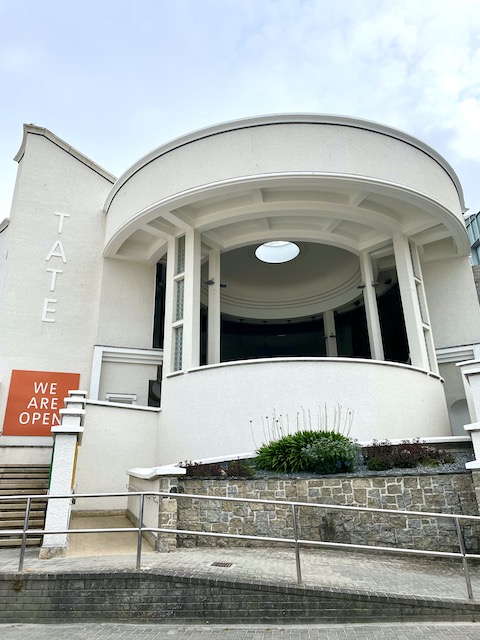

Hepworth’s old house and studios up the road, which have been converted into a museum is also worth going to see if you like sculpture. Her pieces, nearly all of which have ‘Please Do Not Touch’ signs on, are all tantalisingly tactile looking and stand mainly in her garden, amongst the plants.

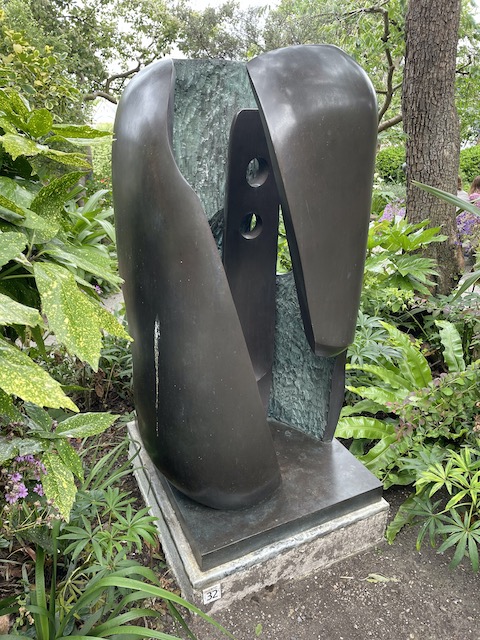
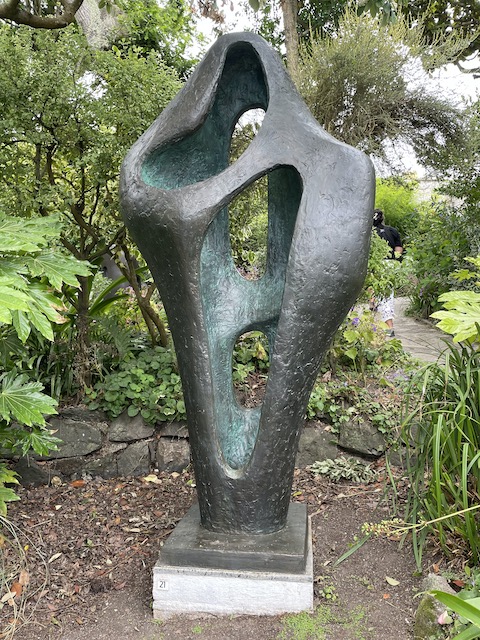

St Ives has lots of fantastic beaches. At this time of year, there is plenty of space to enjoy the sand and sea here and it looked lovely and clean. Plus there are a plethora of knick knack shops and cafes (all wanting extra staff!) to while away the time. We managed an afternoon and that was enough for us.
St Michael’s Mount, Marazion
St Michael’s Mount is a castle on a rock where a family, the St Aubyns, apparently still lives. On some days you can walk across to it when the tide is out but this particular Wednesday required a boat, which wasn’t going to be easy for Anne. I wasn’t too bothered about looking at a stately home and so we both stayed on the mainland and looked at it from afar. The name comes from the fact that Edward the Confessor gave this piece of rock and the nearby land to some Benedictine monks from Mont-Saint-Michel in Normandy not too long before William of Normandy conquered the rest of the country. The castle only came about centuries later, long after the monks had been kicked out.
Marazion, the small town facing the mount, was historically sometimes translated as ‘Market Jew’ but speaking to a very knowledgeable guy who looked after the museum, it was a corruption of the Cornish word ‘Marghaisewe’ which means ‘Thursday Market’ and that was run by monks from the Mount. It’s a nice little town, quieter than its neighbours across the bay at Newlyn or Penzance and a nice spot to look out at the ocean.
The Minack Theatre
That same evening we went to see a music and dance thing at the Minack theatre. This strange and wonderful open air venue was the brain child of Rowena Cade, a woman who bought this piece of land for £100 after the first World War. What began as an offer of a venue to hold a staging of Shakespeare’s The Tempest, turned into a lifelong labour of love to create a beautifully unique amphitheatre. The place originally reminded me a little of Portmeirion in Wales with its strange architectural vision and nod to classicalism, but when I read that this entire place was hand built (albeit with a few explosives), it went up in my estimation.
The backdrop of the water and the nearby coast was beautiful. I can just imagine how The Tempest might have looked with the rolling clouds gathering behind the stage. Part way through our performance, two small ships went sailing by, and sometimes, apparently, dolphins come and gate crash, but not this time sadly.
Tanglewood Wild Gardens
Today we went to explore someone else’s strange vision for their piece of land. This one, more in keeping with nature, kind of. Originally, a couple’s way of getting more wildlife in by digging out a large pond, to creating four huge ponds and opening it up to the public in order to help them to maintain it. A very peaceful place, with a good sense of humour thrown in. We spent a good couple of hours there, just meandering, or drawing (Annie), and watching the dragonflies.


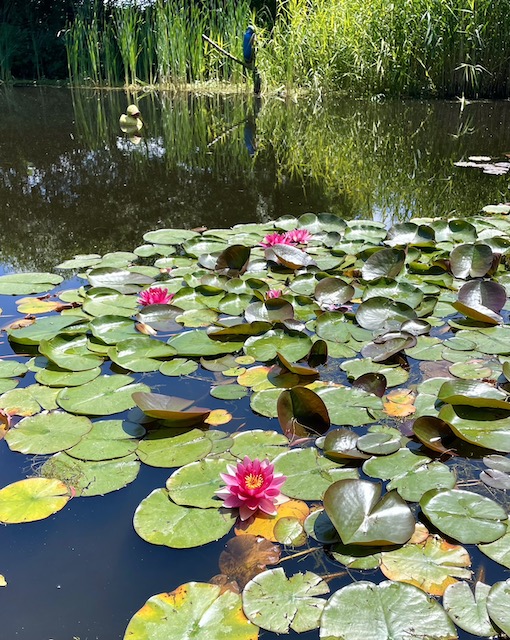
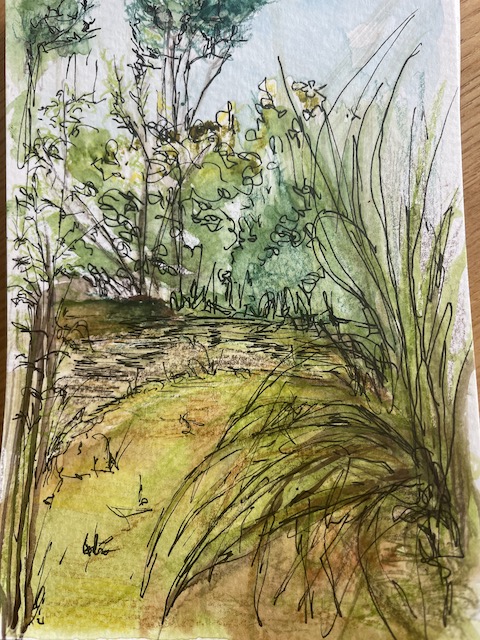


If you get another chance to see St Michael’s Mount, it’s worth it just for the gardens. The castle bit it just another stately home, but the gardens are really lovely, and I think you can pay a lower price just to do them and not the castle.
Ah, next time!